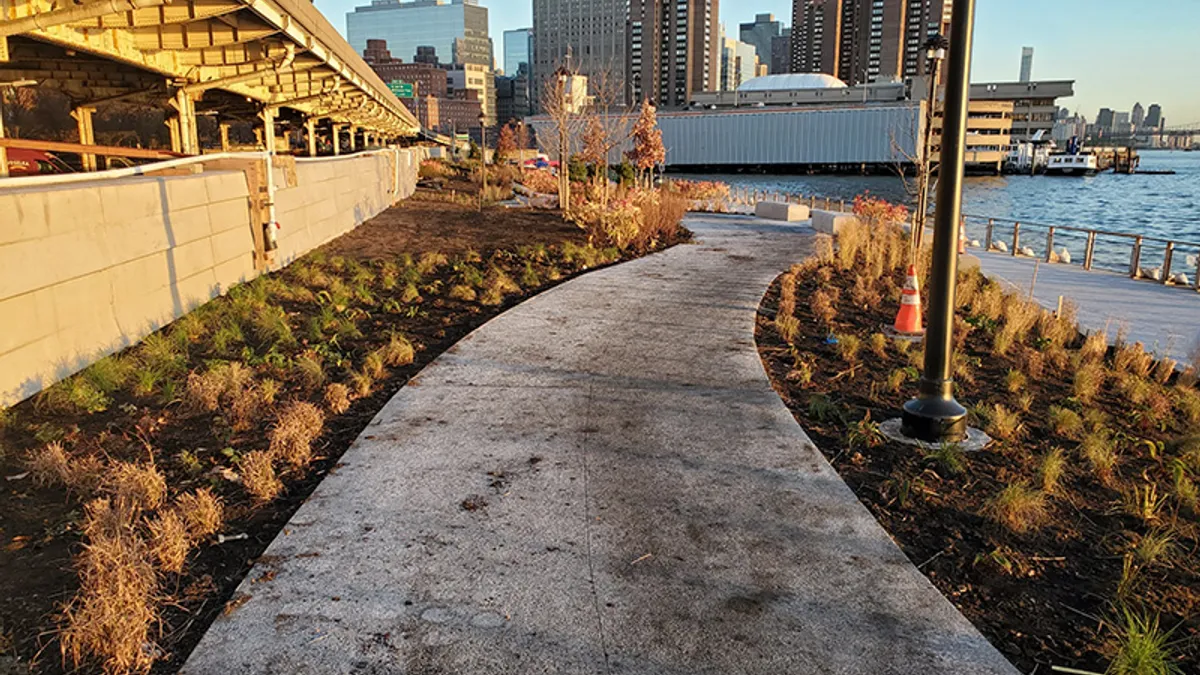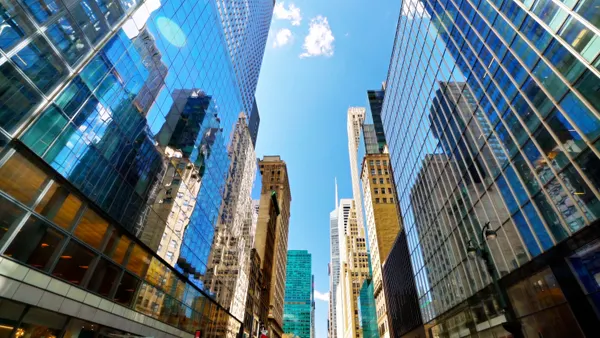Professional engineer Thu-Loan Dinh wants to make sure New York City’s infrastructure is equipped to handle whatever storms the future brings.
In March, Dinh was named assistant commissioner of infrastructure design for the New York City Department of Design and Construction, the city’s primary capital construction project manager. Previously, she served as director of design for the agency’s Coastal Resiliency Program.

In her new role, in addition to overseeing the installation of new water mains, sewers, streets and public plazas, Dinh will continue her coastal resiliency, cloudburst protection and other green infrastructure work to protect New York City neighborhoods from the impacts of climate change.
Here, she talks with Construction Dive about the city’s biggest resilience needs, how engineers should be preparing for extreme weather and green infrastructure trends.
The following has been edited for brevity and clarity.
CONSTRUCTION DIVE: What are New York City’s biggest resilience concerns? How will the DDC’s green infrastructure and cloudburst protection programs help address them?
THU-LOAN DINH: The city wants to ensure it’s ready for future storm events. We are building infrastructure to recover quicker and protect our local communities in vulnerable coastal areas.
Our green infrastructure and cloudburst programs will aid in addressing these concerns by evaluating the localized existing conditions such as size of storm and sewer drains, soil quality, social and economic conditions of the community, etc. and apply a focused measure to better the neighborhood.
You manage more than 120 capital projects valued around $4 billion. What are some of the efforts you’re most excited about in your new role?
I have been lucky to share discussions with leaders that have similar ambitions in building New York City. In my new role, I am most excited about working with my colleagues to promote infrastructure that pushes the boundaries of resilient, sustainable and environmentally conscious projects.
One project cannot address all the concerns of New York City and I look forward to making each project specific enough to benefit and address the concerns of the residents as well as battle our changing climate. NYC DDC engages in a robust community engagement program throughout the design and construction phases. My goal is to continue those efforts through future projects.
Is the NYC Department of Design and Construction benefitting from the Infrastructure Investment and Jobs Act? If so, how?
We build for more than 25 government agencies and we do anticipate that several of them will receive funding through the IIJA that will eventually flow into our portfolio. In fact we’ve embarked with Mayor Adams on a program of capital process reforms so that we can best take advantage of that money and use it as efficiently as possible.
What trends are you seeing in green infrastructure more broadly? What types of projects do you expect to see more of in the coming years?
We are starting to see more rain gardens, infiltration basins, green roofs and permeable pavers being suggested from the beginning in our roadway projects. This is a testament to New York making it a priority to build back sustainable and resilient features in all types of infrastructure work. I expect to see projects that propose innovative infrastructure that can also lead the way to better and efficient uses of our resources here in New York City.
Contractors and engineers should consider the lifecycle cost and adaptation measures to protect neighborhoods who are most at risk during an extreme weather event. New York City prioritizes infrastructure that promotes sustainable development and its ability to bounce back from our next Hurricane Sandy or Hurricane Ida.
What is your favorite project you’ve worked on, and what did you learn?
My favorite project is the East Side Coastal Resiliency project. The city was able to push the limits of the project infrastructure goals and collaborate with our partner agencies to identify vulnerable existing features and improve our subsurface network and public open spaces to better serve the residents in Manhattan’s east side from East 25th Street to Montgomery Street.
ESCR is a unique flood barrier project being constructed in a dense urban area with complicated below- and above-ground infrastructure. The significant project benefits and goals are flood risk reduction, improved access and enhanced public spaces.
What I have learned is that multifaceted projects like ESCR will be looked at as an example for future projects in New York City. It is imperative that the design and construction should be flexible to innovative thinking but still revert back to the goals and benefits of the project.












